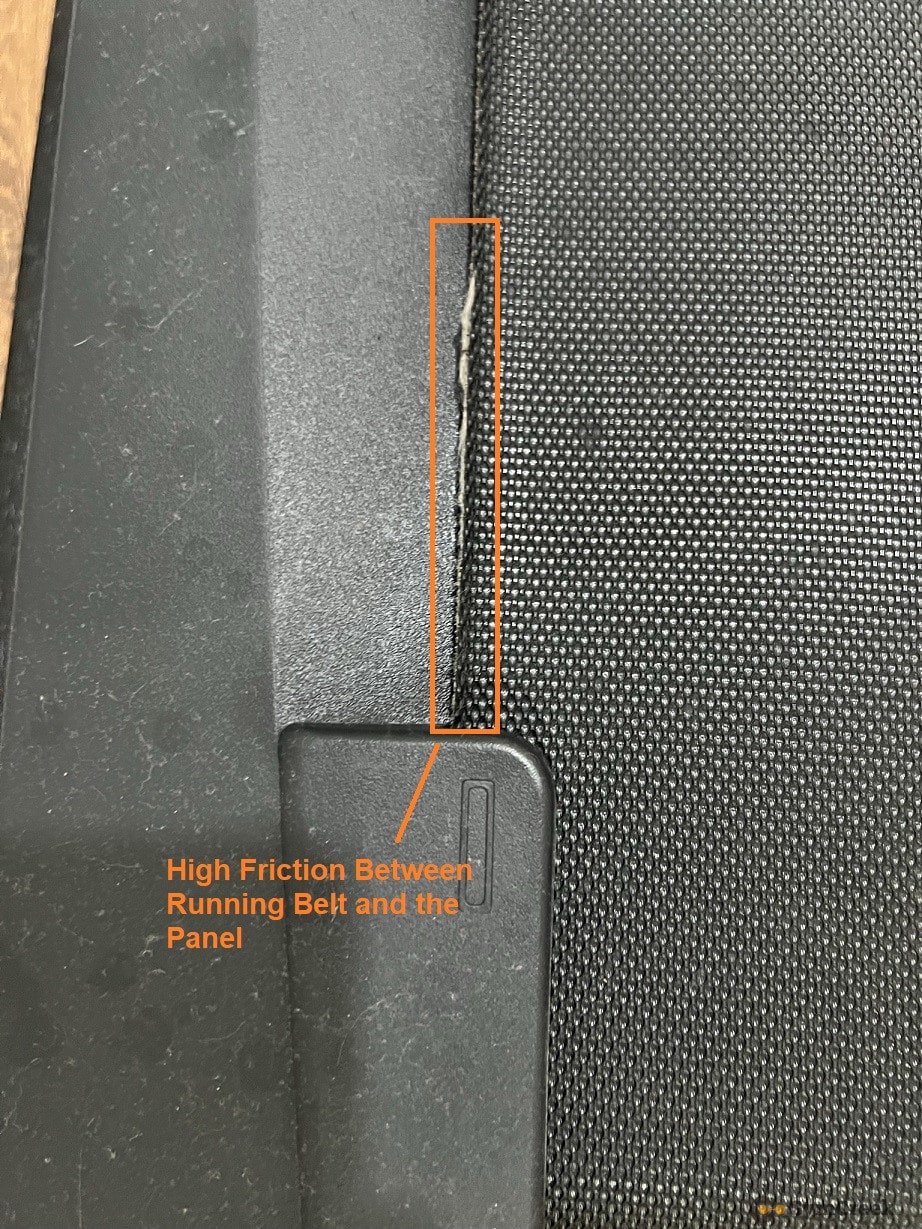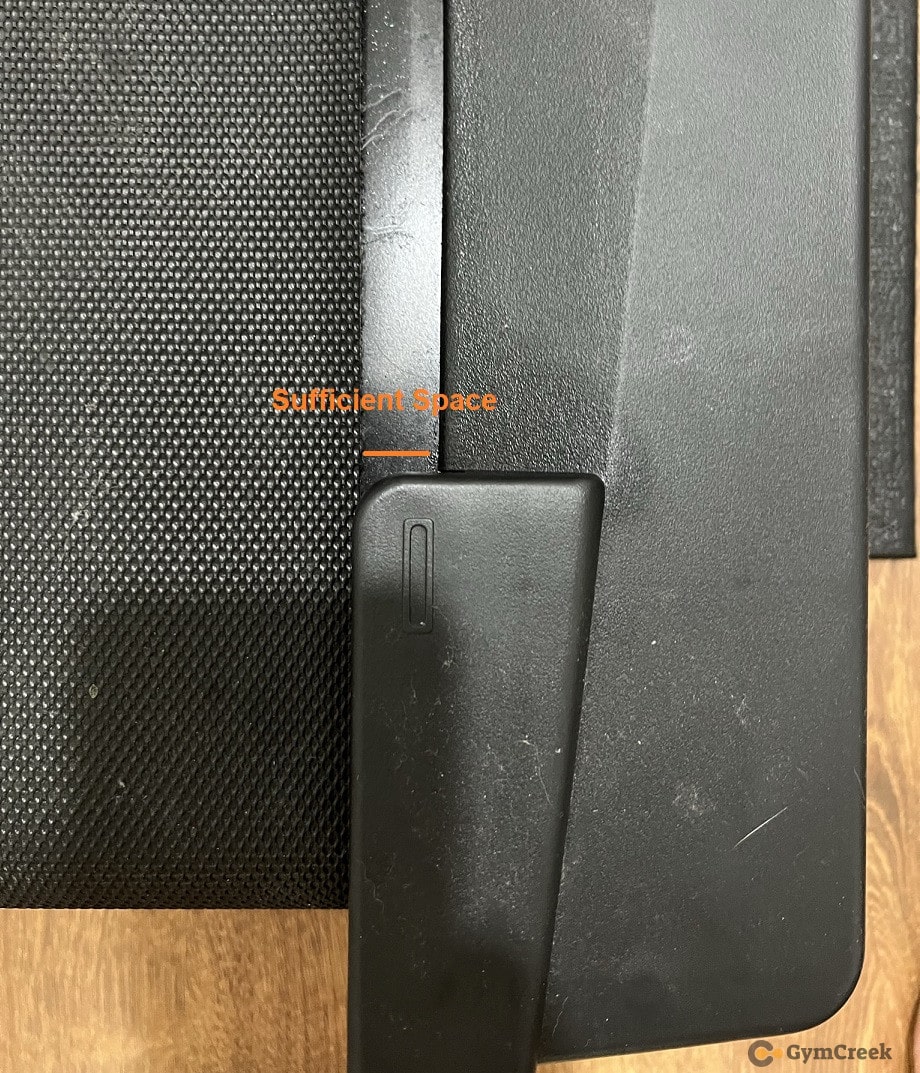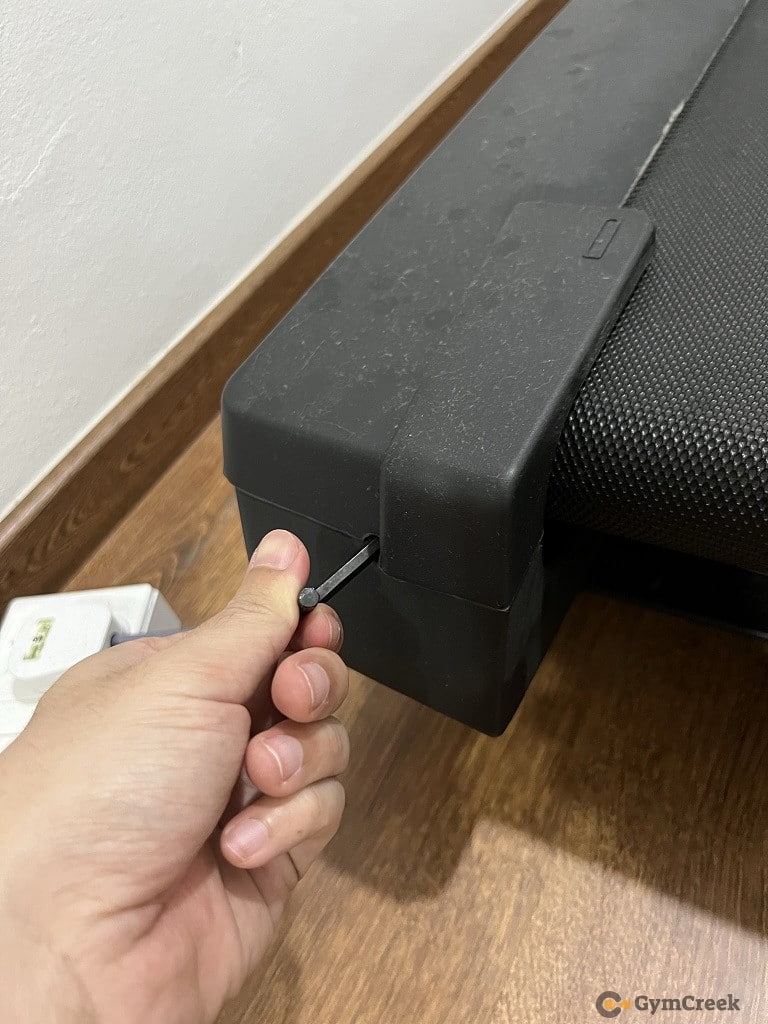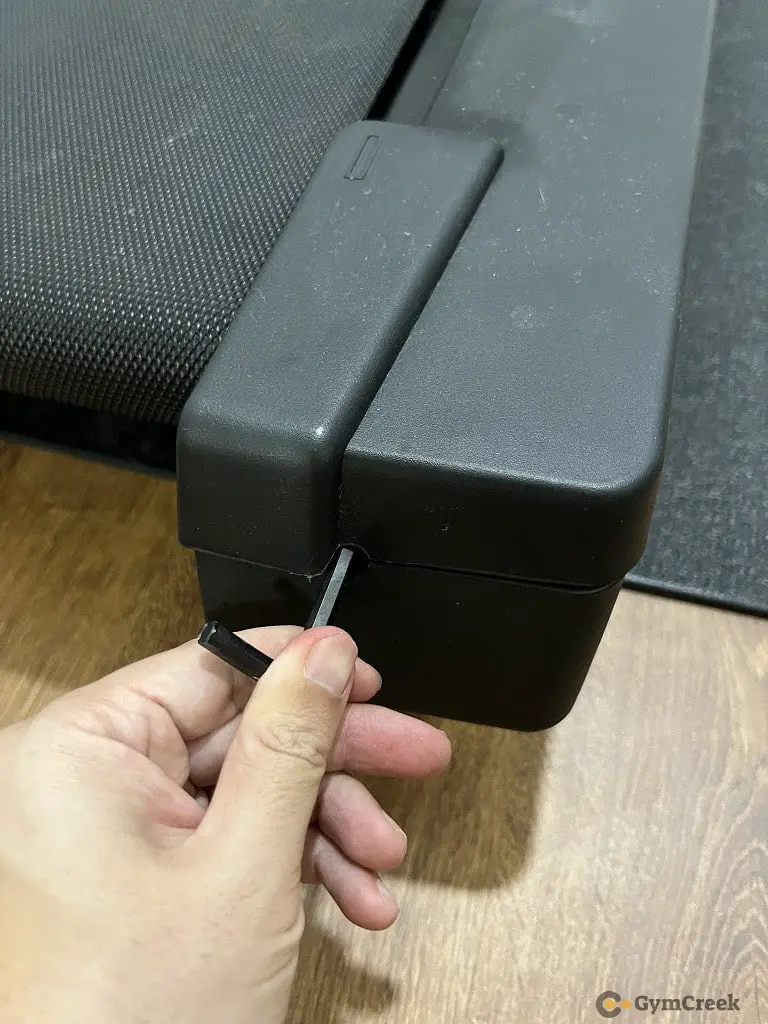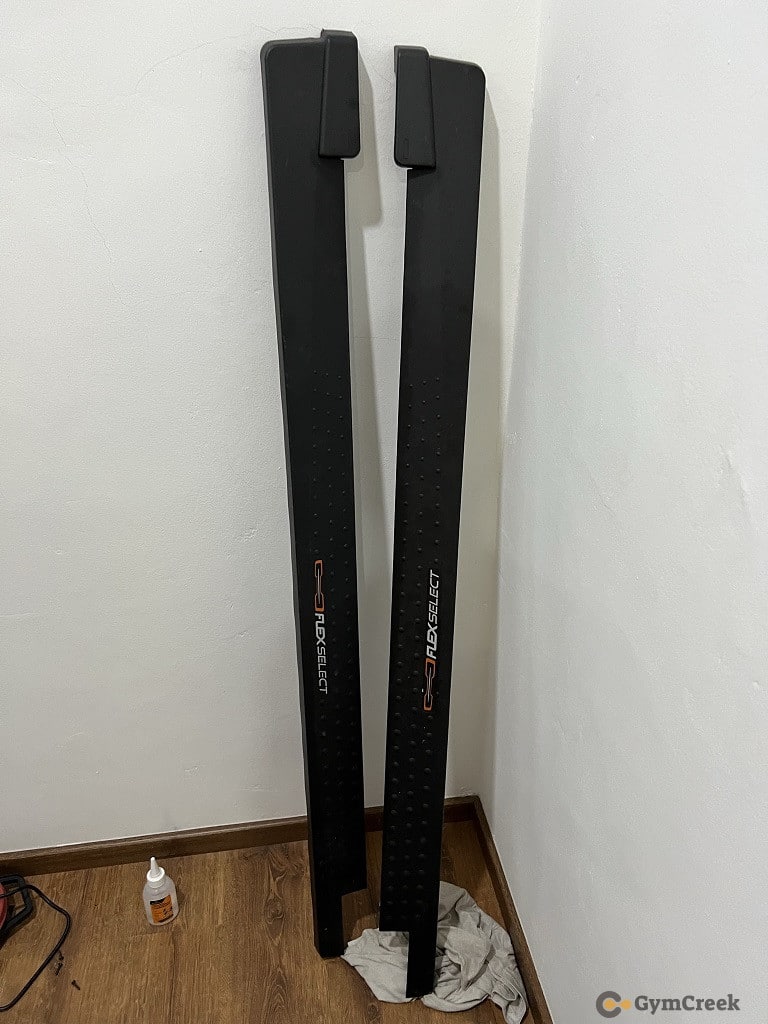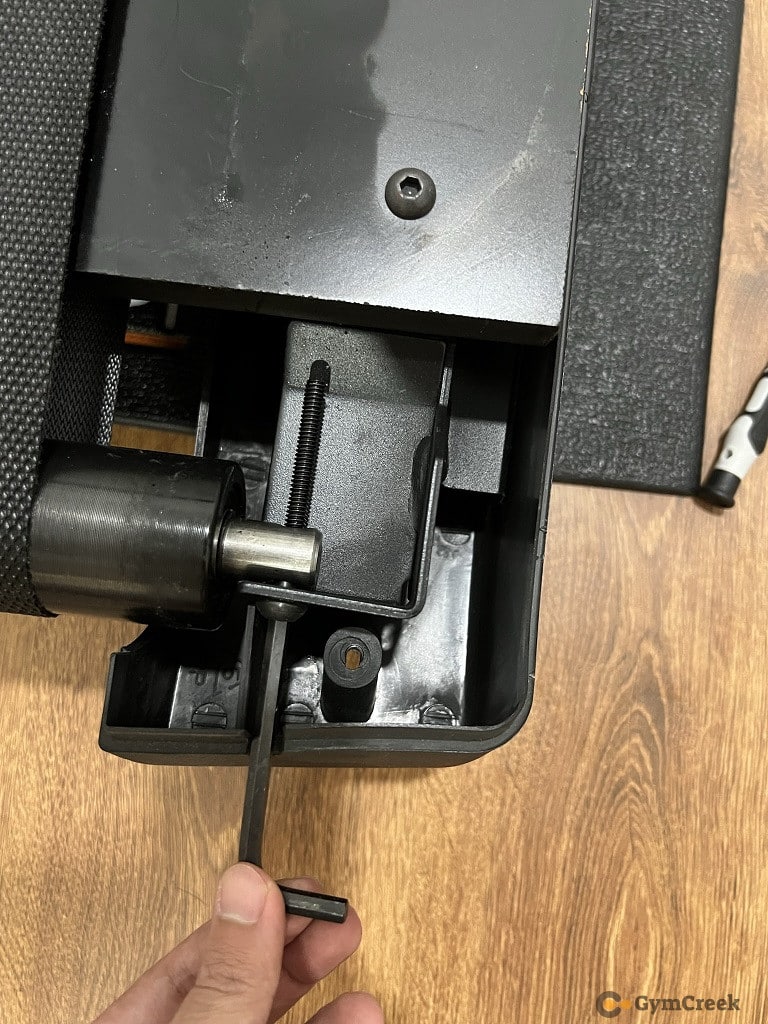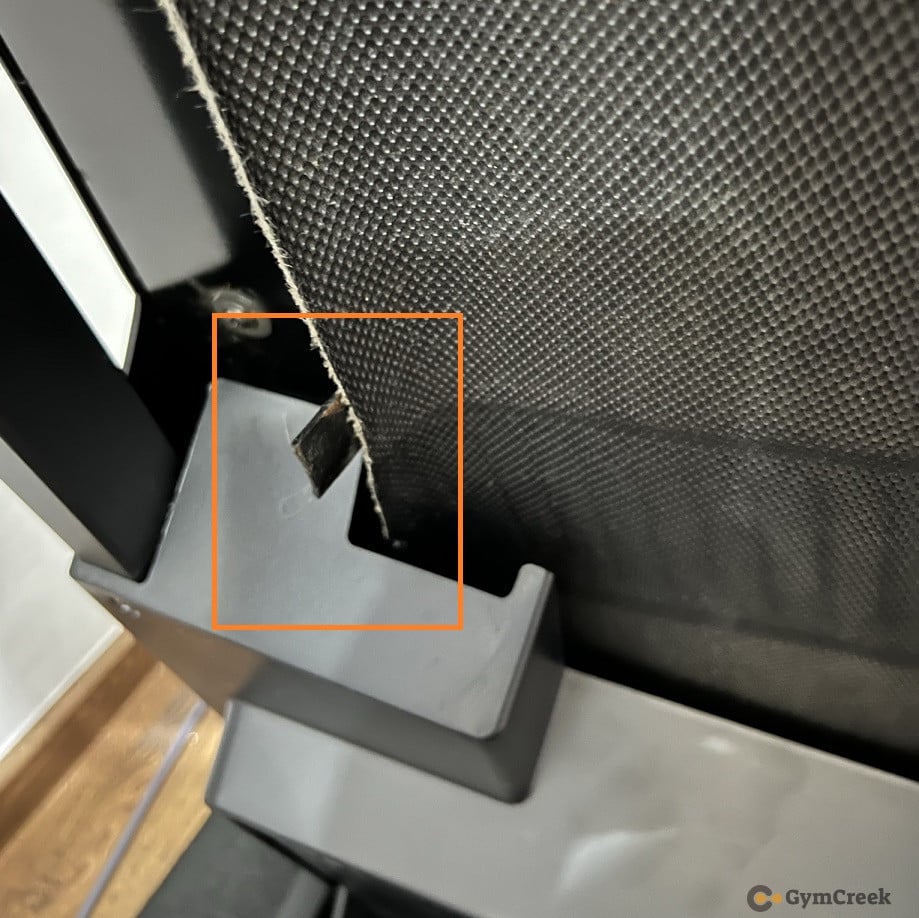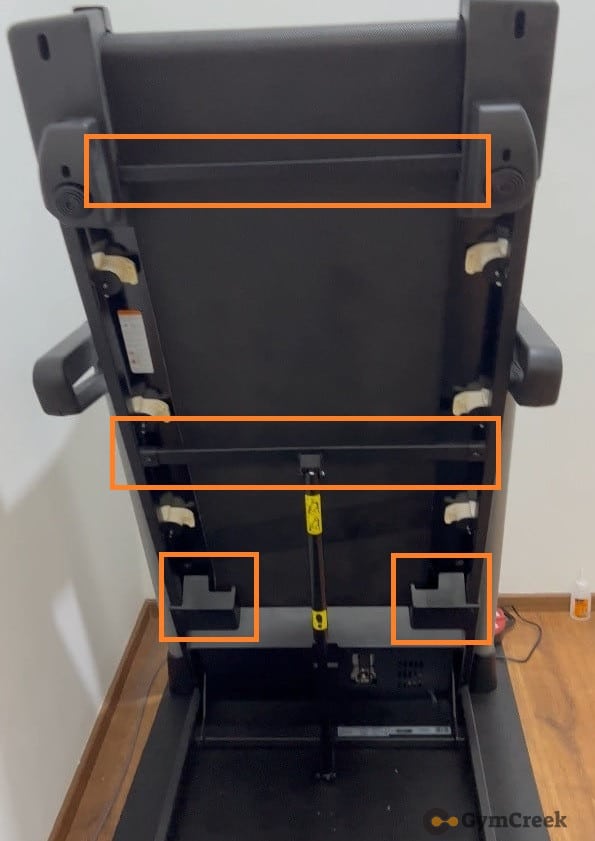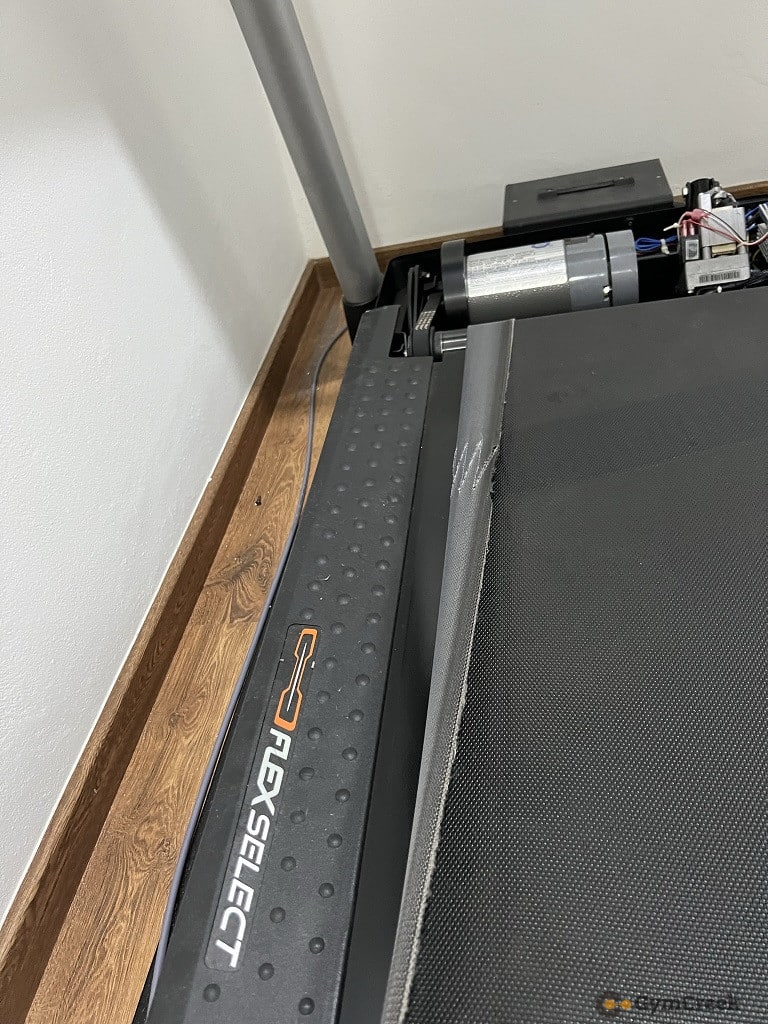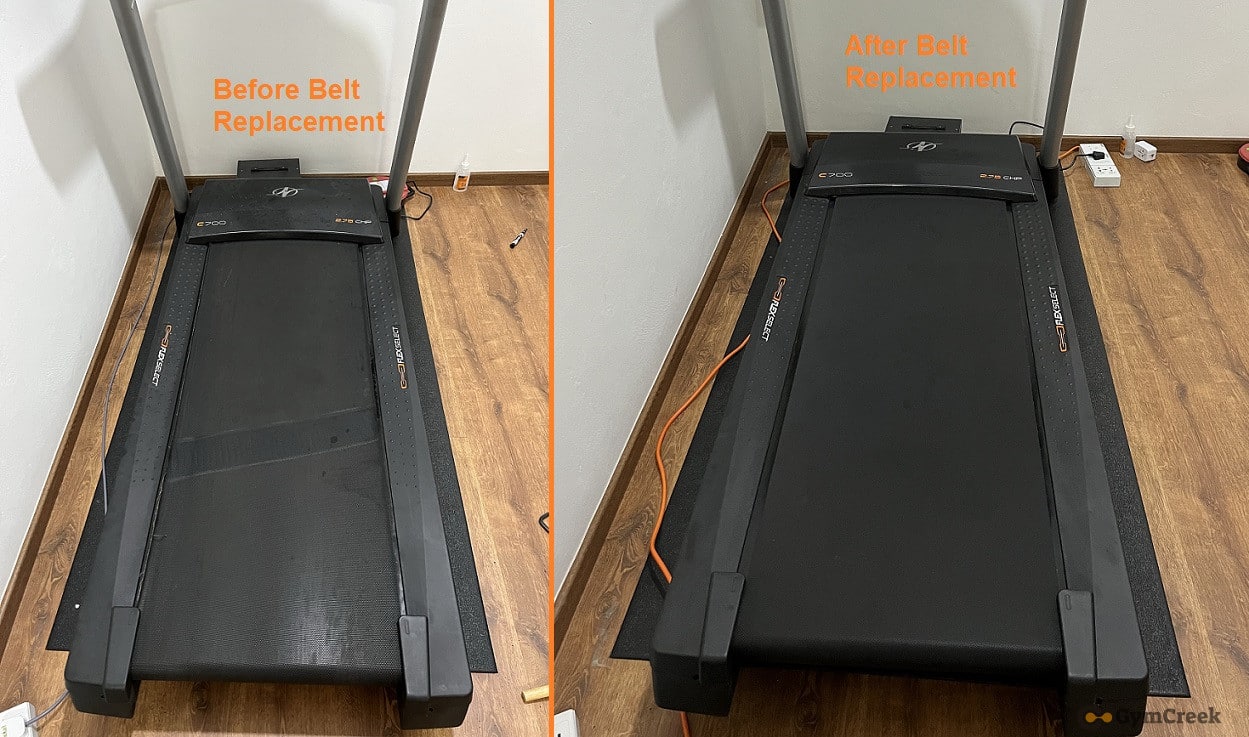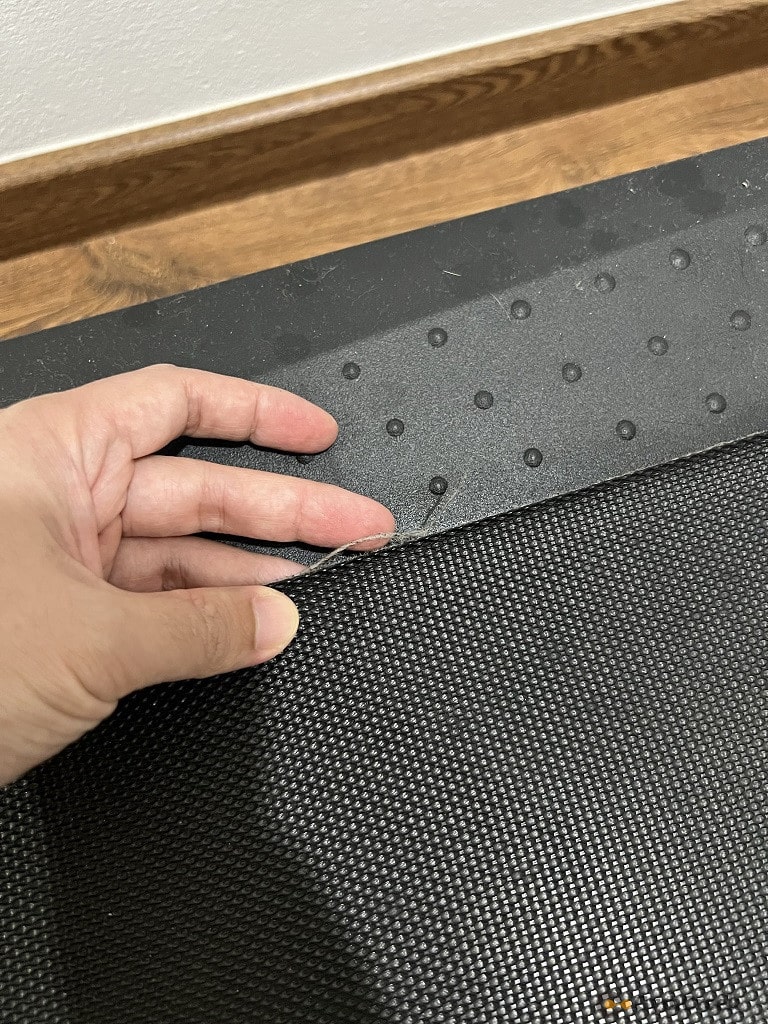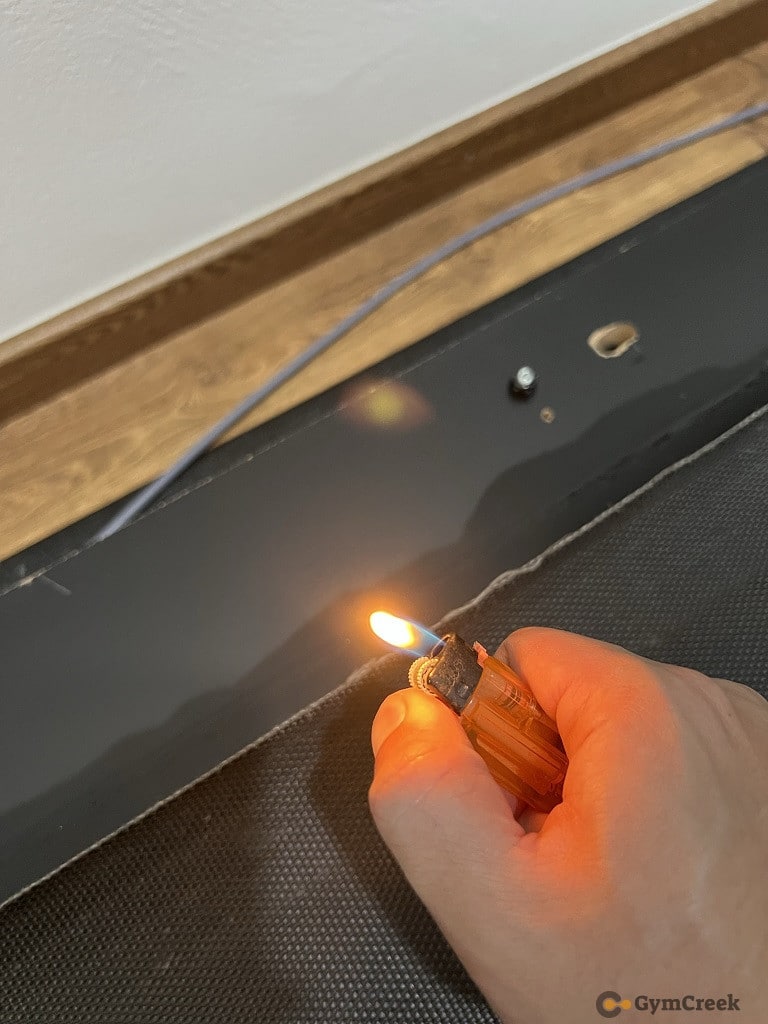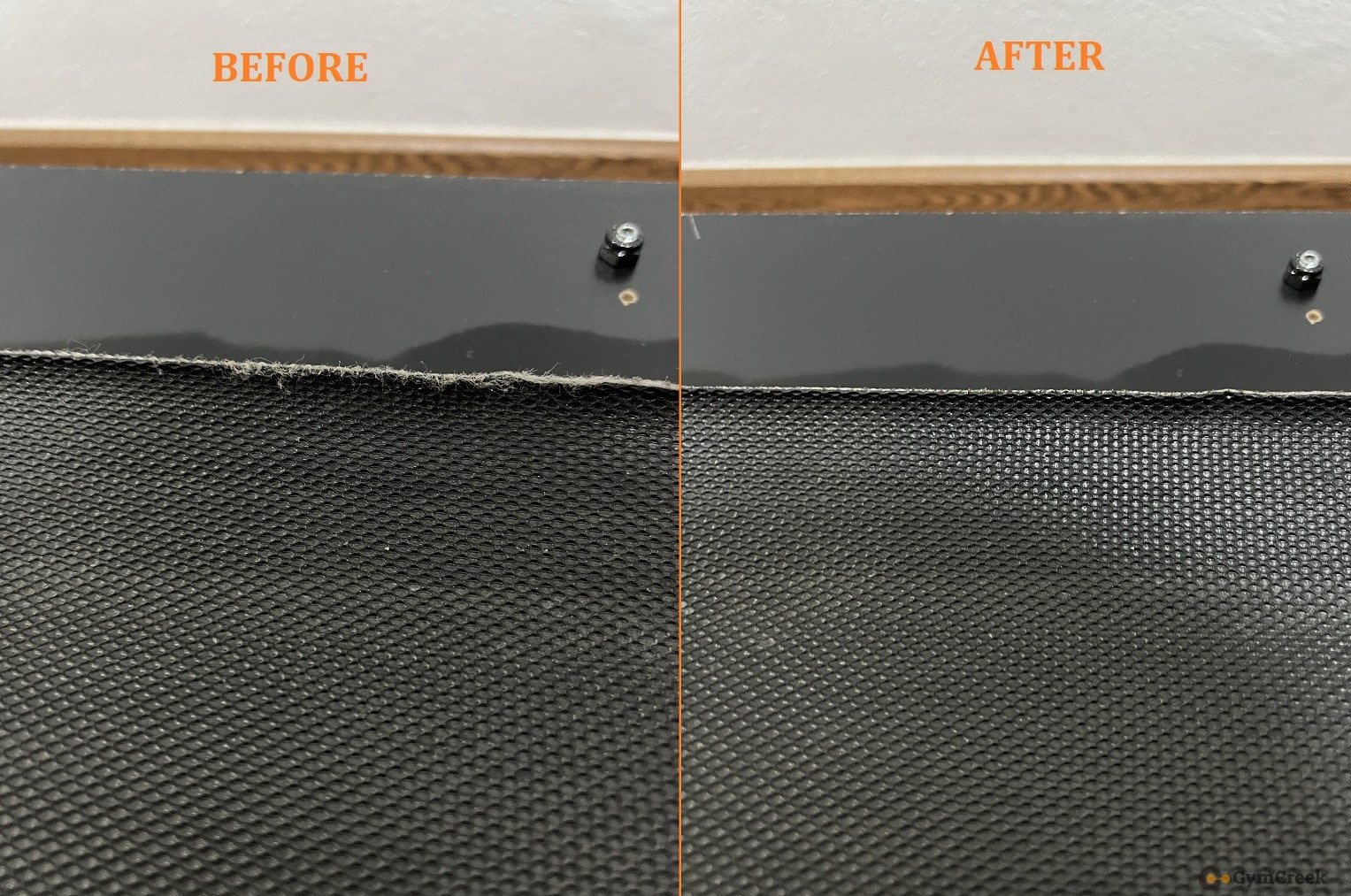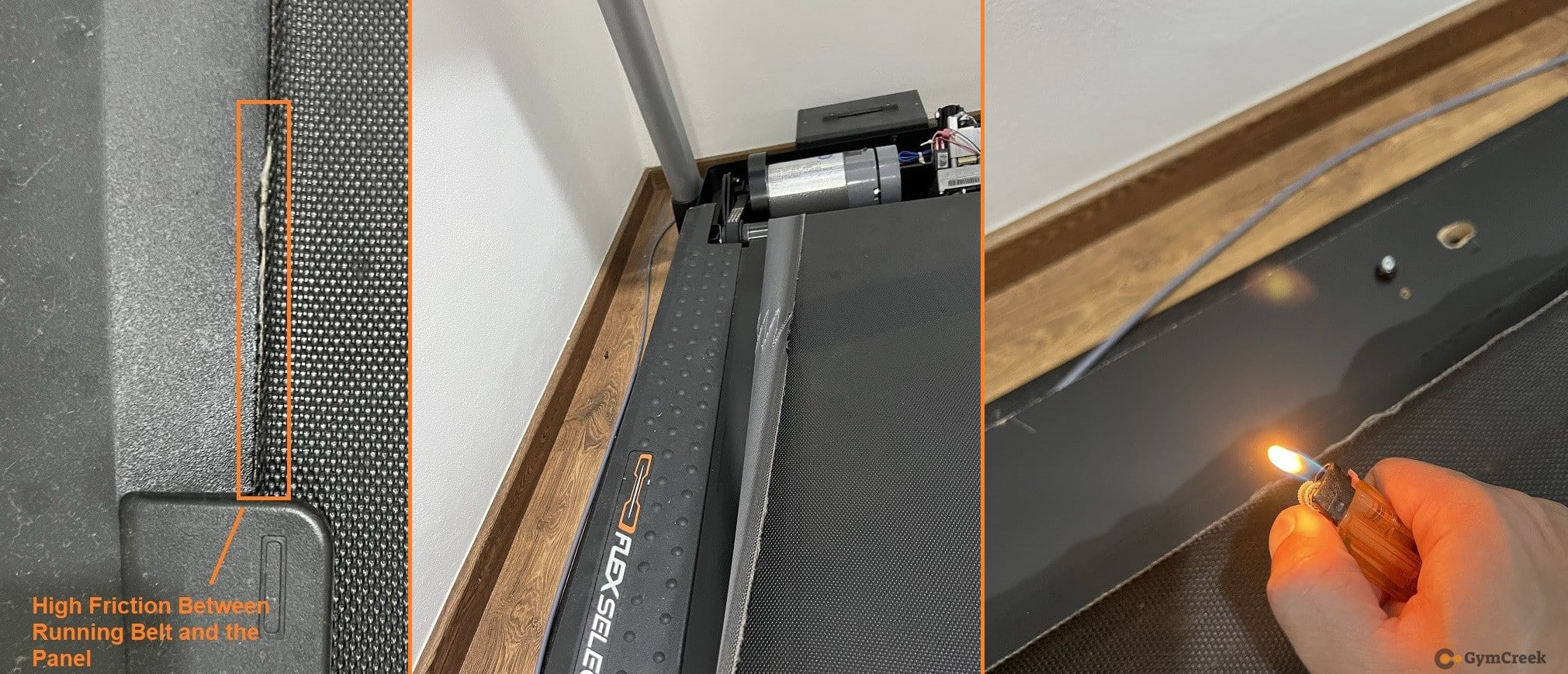
I own a treadmill from NordicTrack, and overall I am happy with it.
However, I will face some random issues from time to time.
One of the common treadmill issues is the running belt curling up on sides.
I believe treadmill from other brands like Horizon Fitness, Sole Fitness, Lifespan, etc will face the similar problem.
In this post, I will list the most common causes of this issue and how to make the running belt in good condition again.
Related:
Treadmill Belt Curling Up on Sides
- Belt Tension is uneven and alignment issue
I would say this is the most possible reason that make your treadmill belt to curl up.
When the belt tension is uneven, meaning there is one side with higher tension, and another side with lower tension.
Normally, this will also cause the running belt off-centered, and slide to the side with lower tension.
I recorded a video about my treadmill case, where my treadmill running belt slid to one side.
As you can see from the video above, my treadmill belt slid to the left side, and the right side has a huge gap between the belt and the right panel.
This was due to uneven tension, the left side has less tension and the right side has higher tension.
Hence, the belt tends to slide to the side with less tension, and sometimes causing weird noises on the treadmill.
How I solved this problem is to adjust the tension of belt evenly, and make the belt to be aligned at the center again.
You may watch the video above for the step-by-step guide on how I adjust the belt tension using the HEX key.
If this problem is not solved, it might cause the treadmill to have speed problems, or eventually lead the treadmill to stop suddenly during the work session.
You might be wondering is the belt slipping problem has anything to do with the belt curling up?
Yes, definitely it will cause the belt to curl up, get hot after use or even make the treadmill experience to feel like slipping.
As you can see from the below, when the belt slides to one side, it will create high friction between the running belt and the side panel when the belt is moving.
Of course, this increases the chance that the belt being damaged and curling up.
In normal case, the running belt and the side panel should have sufficient “Gap” or space to prevent them from causing friction with each other.
As mentioned before, I solved this issue by adjusting the belt tension to make it aligned at the center again.
I would highly suggest you to read this post on how to adjust the belt tension effectively.
Besides, I will briefly show you my steps to adjust belt tension.
| Condition | Why This happens? | Rotate Clockwise or Anti-Clockwise? |
|---|---|---|
| Belt slide to the LEFT side | - Tension at the left side is too low - Tension at the right side is too high | - Rotate the tension screw at the left side Clockwise to increase the tension OR - Rotate the tension screw at the right side Anti-Clockwise to decrease the tension |
| Belt slide to the RIGHT side | - Tension at the right side is too low - Tension at the left side is too high | - Rotate the tension screw at the right side Clockwise to increase the tension OR - Rotate the tension screw at the left side Anti-Clockwise to decrease the tension |
Use a HEX key to insert through the pinhole at the left side of your treadmill and you will be able to “feel” the screw inside and adjust it.
Similarly, you may use the same method to adjust tension for the right side.
Sometimes, I feel it is difficult to adjust the screw inside the pinhole as I am unable to see it.
What I did in this case was simply remove the side panels and let it lays on the wall.
Now I can see the screw clearly to adjust it.
When the running belt is aligned properly at the center again, it will cause less friction and prevent further curling up on the belt.
What if the belt already curls up?
After the belt is being aligned at the center, run the machine without anyone on it for around 10 minutes.
Please take note appropriate belt tension is required to make this trick work, neither too high or too low.
With appropriate belt tension, there is a possibility that the belt can be “Stretched Back” to its original shape.
This trick might not work on a severely damaged belt, but it won’t hurt to try.
- Treadmill Bottom Belt Alignment Bar Issue
I do not know the exact name of this component, hence I will just call it as “Bottom Belt Alignment Bar” in this post.
You may lift up the running deck and fold it as shown in my image below:
Read: What to do if treadmill won’t unfold
After that, check if the belt is aligned properly within the range of those “alignment bars“.
Make sure the running belt is not out of alignment.
As when the belt is moving, these bars will keep the belt aligned at the center and avoid the curling up issue.
- Unusual Object Under the belt and Uneven Deck Surface
This reason probably not happen too often but it might be the real reason to cause the belt to curl up.
Is there any Pet toy or debris stuck under the running belt?
When this happens, it will create an uneven running deck surface.
In some serious cases, it might even fold up and damage the entire belt.
I made a mistake before, the belt was too loose and operating the treadmill made my treadmill belt fold up as shown in the image below.
This is a mistake I do not want to repeat anymore.
Besides, as you can imagine, the belt tends to curl up if some strange object stuck under the belt, or even fold up like my case.
What you can do in this case is is lift the running belt up slightly, and inspect if anything stuck under the belt.
- Wear and Tear of the belt
As almost anything wears out over time, the belt is no exception.
When we run on the belt, it creates friction, stress and uneven edges on the belt.
Sometimes you might even notice that the belt slows down when you step on it.
Besides, incorrect usage might even accelerate the wear out of the belt.
What you can do if your belt is severely worn out is to replace the running belt with a new one.
This is also for your own good as damaged belt might risk your safety.
Update: I have finally replaced my old belt with a new one as shown in the image below:
Before that, I would suggest you to inspect if the belt can be repaired with some simple maintenance tips as below.
Is there any fray coming out from the side of the belt?
If yes, you may use a lighter to burn out all the frays as shown in the image below:
I would suggest you to do this for both sides of the belt.
The belt looks better after the fray is removed.
As you can see from the image above, the belt is still curling up.
What I will do in this case is just repeat the solution No 1 in this post, align the belt at the center again with the right tension, and let it run for 10 minutes.
Sometimes with appropriate tension and alignment, the belt would be able to be “stretched back to absolute straight shape” just like how it used to be.
Conclusion
I have listed the most possible reasons that cause the treadmill belt curling up.
I encountered the same problem myself, and I have shared what I did to solve this issue.
If you encounter the same belt curling issue, let me know in the comment below how you solve it.

